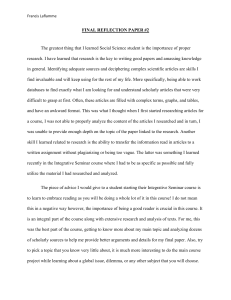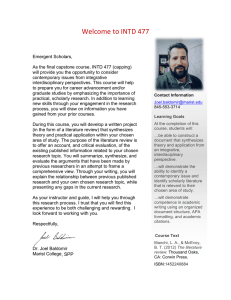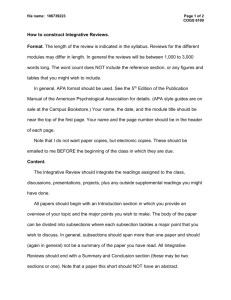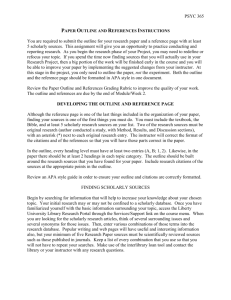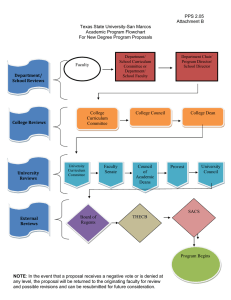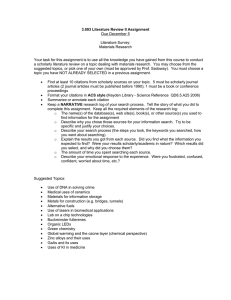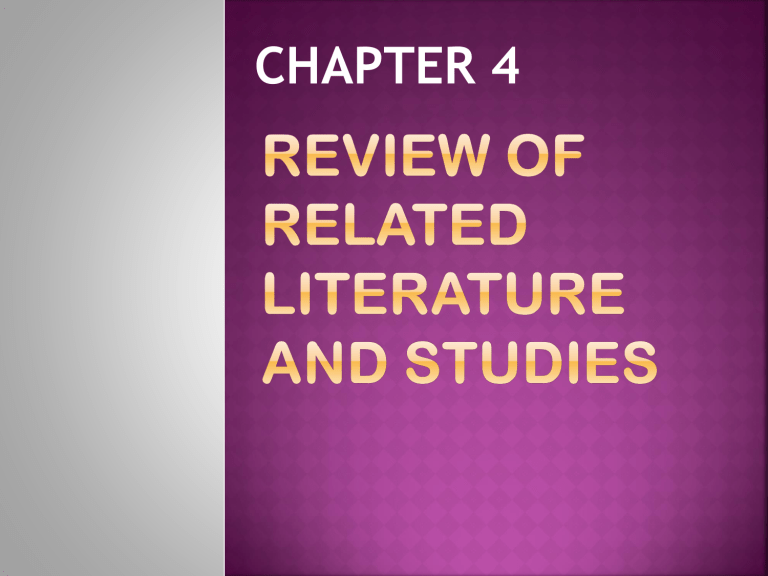
CHAPTER 4 What is Literature Review? A literature review provides an overview of what has been written about a specific topic. The review of literature includes practically all the information and data which are authoritative and relevant to the topic of the study as in the case of research and similar scholarly undertakings. The literature can cover a range of sources, namely: Journal articles Monographs Computerized databases Conference proceedings Theses and dissertations Empirical studies Government reports and reports from other bodies Historical records Statistical handbooks Since there are varying sources from which you can deduce, base and derive literature review, here are some questions that can help lead you to your choices. 1. Have you clearly indicated the scope and purpose of the review? 2. Have you included a balanced coverage of what is available? 3. Have you included enough materials to show the development and limitations in this area? 4. Have you included the most recent and relevant studies? 5. Have you indicated the source of some literature by referencing accurately? 6. Have you used mostly primary sources or appropriate secondary sources? Why do a Literature Review? Literature reviews may be great way to help you come up with enriching your research idea. There are also means of ensuring that your idea/s has not been researched on by someone else. Hence, there is a need to conduct a literature review. Depster and Hannah (2016) provide some reasons why a review is done. These are the following: To indicate the research that has been conducted in area before, to ensure that you’re not reinventing the wheel’. To demonstrate that you’re aware of important and recent studies in your study area. This way, you ensure that you haven’t missed an important study that makes your research idea seem less brilliant than you first imagined. Why do a Literature Review? To ensure that you haven’t missed literature detailing a novel way for you to conduct your study, or pointing you to a data-collection tool that is most appropriate for your study. To explain the theoretical background to your proposed research project. To demonstrate your ability to critically analyse the literature in your study area. This indicates that your research idea is based on a good understanding of previous research in the area, and it also demonstrates your ability to highlight the existing gap or any disagreements in the research that your study addresses. Kinds of Literature Review Traditional – referred to as narrative literature review, it provides a quick overview of current studies. It helps explain why your study is important in the context of literature, and can also help you identify areas that need further research. Integrative – This review synthesizes from different approaches (Whittemore & Knafl, 2005) This approach allows for the integration of qualitative with quantitative studies. Syntactic – This review synthesizes high quality empirical information to answer a given research question. Conducting a systematic review involves following rigorous, predefined protocols “that minimize bias and ensure transparency” (guides.library.edu/c.php?48030 p=3053671). Scoping – This review involves a broad research question that explores the current evidence base (Armstrong, Hall, Doyle & Waters, 2011). It can help inform areas that are appropriate for a systematic review. Characteristics of a Good Literature Review 1. 2. 3. 4. Must be as recent as possible. Materials must be as objective and unbiased as possible. Materials must be relevant to the study. Materials must be not too few but nor too many. Remember: A good literature review needs a clear line of argument. Use your critical observed. A good literature review shown the following characteristics: Focused – it presents only ideas and reports on studies that are closely related to the topic. Concise – the ideas should be presented economically. Logical – the flow within and among paragraphs should be a smooth, logical progression from one idea to the next. Developed – the ideas are fully and completely written. Integrative – it shows how ideas are related and how all reviewed materials contribute to your topic. Current – it exhibits up-to-date information related to your study. Types of Sources The other element in selecting relevant materials for the literature review is the types of sources with which you have to be familiar with. Searching for information related to the research being undertaken needs time and much thought. The sources can be classified into the following: 1. Primary sources – publication in which researchers report the results of their study. Findings are communicated by the author directly to the readers. Most materials that fall under this type are journals which are usually published monthly, quarterly or bi-annually. Each article deals with a particular research or study. 2. Secondary sources – publications in which authors describe the work of others (Fraenkel & Wallen, 2008). Textbook is a familiar example of this type. This is also used for different courses offered in the curriculum. Other examples used are encyclopedias, research review and yearbooks. WRITING COHERENT REVIEW OF LITERATURE This lesson aims to guide you in writing a literature review coherently. Literature as in any form of writing demands the observance of coherence. The review is usually presented in a traditional narrative way through summary and synthesis becoming a body of her own words to avoid presenting the whole material as a quotation or a series of quotations. A literature review is not annotated bibliography in which you summarize briefly each article that you have reviewed or researched on. Structure of a Literature Review Use the three main components consistent across literature reviews namely: the introduction, body and conclusion. (research.usaask.ca/documents/Effective_Learning_Reviews.pdf) The introduction is often a single paragraph that introduces the general topic and provides scholarly or societal (e.g. policy, practice) context for the review. It also identifies the overall statement of knowledge about the topic (e.g. methodology, evidence, problem or opportunity. Body – of the literature review, you need to address previous research on the topic grouped according to theme, theoretical, perspective, method used or chronological development. This section draws together the significance of previous individual studies by highlighting the main themes, issues and knowledge gaps. You must connect the literature to the proposed research objectives within this parts and describe previous work you have to accomplished related to your proposed study. Structure of a Literature Review The Conclusion to the literature is often a single paragraph that provides a summary statement of the overall state of knowledge about the topic. This section should reconnect ideas to your introduction. It should establish the potential significance or importance of your proposed study relative to the current state of knowledge. Remember to use accurate in text citations. A literature review must contain and correct citations for every source.
